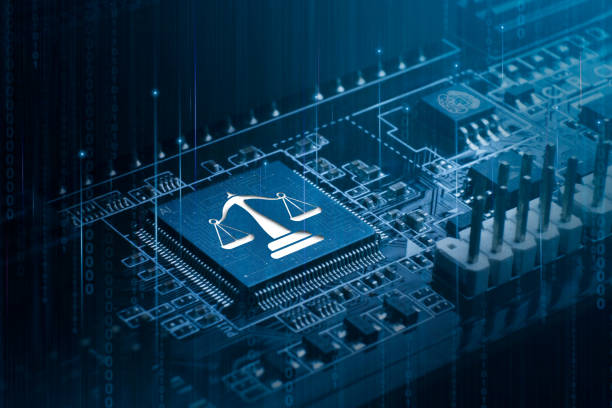Artificial intelligence has advanced from a futuristic concept to an integral part of modern life, shaping everything from global economies to personal experiences. Algorithms now influence hiring decisions, healthcare diagnostics, law enforcement, and even creative industries. Yet, as AI becomes more powerful and pervasive, it also presents complex challenges related to ethics, safety, fairness, and accountability. Governments and institutions around the world are struggling to balance innovation with oversight. The future of AI regulation is no longer a distant concern; it is an urgent question shaping how societies will coexist with intelligent systems.
The Urgency of Regulating Artificial Intelligence
Artificial intelligence has transformed industries with remarkable speed. Machine learning models now outperform humans in pattern recognition, prediction, and natural language processing. While these advancements have created unprecedented efficiency, they also raise critical concerns. Without regulation, AI can amplify bias, violate privacy, manipulate public opinion, and destabilize labor markets. The growing influence of large AI models, from chatbots to autonomous vehicles, demands a legal and ethical framework that ensures their safe and equitable deployment.
Unregulated AI development could lead to social and economic instability. Automated decision-making already affects millions of lives, from credit scoring to criminal sentencing. When errors occur, accountability is often unclear. The opacity of AI systems, especially deep neural networks, makes it difficult to understand how they reach conclusions. This lack of transparency erodes public trust. Policymakers now face the challenge of creating laws that safeguard citizens while allowing innovation to thrive.
The Global Landscape of AI Regulation
The regulatory conversation around AI is global in scope. Different countries have adopted varying approaches based on their political systems, cultural values, and technological capabilities. The European Union, the United States, and China have emerged as the three main centers of AI governance, each representing a distinct philosophy of control and development.
The European Union has taken the lead in comprehensive AI legislation. Its Artificial Intelligence Act seeks to establish a risk-based regulatory framework, classifying AI applications according to their potential harm. High-risk systems, such as those used in healthcare, finance, or law enforcement, will face strict compliance requirements, including transparency obligations and human oversight. The EU approach emphasizes ethics, data protection, and accountability, consistent with its broader digital governance principles.
The United States has favored a more decentralized and innovation-driven strategy. Rather than enacting a single federal AI law, the U.S. government has allowed agencies to develop sector-specific guidelines. The focus has been on promoting innovation while addressing risks through voluntary standards and industry collaboration. However, growing concerns about misinformation, privacy breaches, and discrimination have prompted calls for stronger federal oversight.
China’s regulatory model centers on state control and national security. The government views AI as both a strategic asset and a potential threat. Regulations in China focus on aligning AI development with state priorities, ensuring social stability, and maintaining political control. The country has introduced rules governing recommendation algorithms, deepfakes, and generative AI content, requiring platforms to adhere to strict content moderation and identity verification standards.
Other regions, including the United Kingdom, Canada, Japan, and Australia, are developing hybrid models that combine ethical guidelines with targeted legislation. The diversity of these frameworks raises questions about international interoperability and the potential fragmentation of global AI standards.
The Core Principles Guiding AI Regulation
Although approaches vary, most policymakers agree on a set of guiding principles for AI regulation. These include transparency, fairness, accountability, safety, privacy, and human oversight. Transparency ensures that AI systems are explainable and their decisions can be audited. Fairness requires that algorithms do not perpetuate discrimination or bias. Accountability assigns responsibility to developers, deployers, and operators for the outcomes of AI systems.
Safety and reliability are central to public trust. Regulators aim to prevent AI from causing harm through malfunction or misuse. Privacy protection addresses concerns over mass data collection and surveillance, as many AI systems depend on large datasets to function effectively. Finally, human oversight ensures that AI does not operate in isolation but remains under meaningful human control.
These principles are the foundation of emerging regulatory frameworks, influencing laws, corporate governance standards, and international agreements. However, the challenge lies in translating these abstract values into concrete, enforceable policies that can adapt to the rapid evolution of technology.
The Role of Data Governance
Data is the lifeblood of artificial intelligence. Without high-quality, representative data, AI systems cannot perform reliably or fairly. As a result, data governance has become a key focus of AI regulation. Policymakers are increasingly emphasizing how data is collected, stored, processed, and shared.
The European Union’s General Data Protection Regulation (GDPR) laid the groundwork for modern data governance, granting individuals control over their personal data. The upcoming AI Act builds upon this framework, requiring organizations to ensure that training data is free from bias and errors. In contrast, the United States has relied on sector-specific privacy laws, creating a patchwork of regulations that vary by industry and state.
Data localization laws in countries like China and India impose additional restrictions, mandating that data generated within national borders be stored domestically. These policies reflect broader geopolitical concerns about digital sovereignty and data security. While they aim to protect citizens’ privacy, they also complicate international collaboration in AI research and deployment.
Regulating data also involves addressing algorithmic transparency. Policymakers are demanding that AI developers document data sources, preprocessing methods, and potential biases. This documentation ensures accountability and allows regulators to trace the decision-making processes of complex models. In the long term, data governance will determine not only the fairness of AI but also its legitimacy in the eyes of society.
The Debate Over Open vs. Closed AI Models
One of the most contentious issues in AI regulation is whether models should be open-source or proprietary. Open-source AI promotes transparency, innovation, and collaboration, allowing researchers to audit systems for safety and bias. However, it also poses security risks, as powerful models can be misused for malicious purposes such as generating misinformation or automating cyberattacks.
Proprietary models, on the other hand, are developed and controlled by private companies, often with limited public scrutiny. Companies argue that secrecy is necessary to protect intellectual property and prevent misuse. Critics counter that this lack of transparency prevents meaningful oversight and concentrates power in the hands of a few corporations.
Policymakers are now exploring hybrid approaches that balance openness with responsibility. Some propose controlled access to large models, where verified researchers can study and test them under regulated conditions. Others suggest licensing systems for AI developers, requiring companies to meet safety and ethical standards before releasing models to the public.
The outcome of this debate will shape the structure of the AI ecosystem for years to come. Whether AI remains an open scientific endeavor or becomes a tightly controlled industry will influence innovation, competition, and global governance.
Addressing Algorithmic Bias and Discrimination
Algorithmic bias is one of the most visible and controversial aspects of AI regulation. Bias arises when training data reflects historical inequalities or unbalanced representation, leading models to produce discriminatory outcomes. Examples include facial recognition systems that misidentify people of color, hiring algorithms that favor certain demographics, and predictive policing tools that reinforce social disparities.
Regulators are responding by requiring transparency and fairness audits. The European Union mandates that high-risk AI systems undergo conformity assessments before deployment. In the United States, several states have introduced algorithmic accountability laws that compel companies to evaluate bias in their systems.
However, eliminating bias is technically and socially complex. Bias often reflects deep-rooted societal structures that cannot be corrected through code alone. Policymakers must therefore integrate technological solutions with broader social reforms. Ethical guidelines, diverse data collection, and inclusive design practices are part of this holistic approach.
Accountability is another critical element. Regulators are considering mechanisms to assign responsibility when biased AI causes harm. Developers, deployers, and users may all share liability depending on their role in the AI lifecycle. Establishing clear accountability will deter negligence and encourage ethical development practices.
The Challenge of Regulating Generative AI
The rise of generative AI, capable of creating text, images, video, and code, has introduced new regulatory challenges. Tools like large language models can produce realistic content at scale, blurring the line between authentic and synthetic information. This capability raises concerns about misinformation, intellectual property rights, and consent.
Policymakers are particularly focused on synthetic media, including deepfakes. Malicious use of deepfakes threatens privacy, reputation, and democratic discourse. Regulations now require that AI-generated content be labeled clearly to prevent deception. Some jurisdictions are developing digital watermarking standards to authenticate original media.
Intellectual property law also faces disruption. AI-generated content complicates questions of authorship and ownership. Traditional copyright frameworks assume human creators, leaving ambiguity over whether AI outputs can be copyrighted or who owns them—the developer, the user, or the model’s training data sources.
Governments are beginning to address these issues through consultation and reform. The United States Copyright Office has clarified that AI-generated works without significant human input cannot be copyrighted. The European Union is exploring collective licensing mechanisms to compensate creators whose work is used to train AI models. These measures reflect an evolving understanding of creativity in the age of artificial intelligence.
The Risk of AI in Critical Infrastructure
AI systems are increasingly integrated into critical infrastructure, including energy grids, transportation networks, and healthcare systems. Their failure or manipulation could have catastrophic consequences. As a result, policymakers are prioritizing security and reliability in these domains.
In sectors such as aviation and medicine, AI algorithms assist in decision-making that affects human lives. Regulators are demanding rigorous testing, certification, and ongoing monitoring of these systems. Safety standards similar to those used in aerospace or pharmaceuticals are being adapted for AI applications.
Cybersecurity is a major concern. AI-driven systems can both defend against and conduct cyberattacks. Malicious actors could exploit vulnerabilities in AI models to disrupt essential services or exfiltrate sensitive data. Governments are developing frameworks for AI incident reporting, risk assessment, and resilience planning to mitigate such threats.
The potential weaponization of AI further complicates regulation. Autonomous weapons, surveillance systems, and algorithmic warfare raise ethical and geopolitical dilemmas. International bodies are debating whether to ban or limit lethal autonomous systems, echoing historical discussions around nuclear and chemical weapons. The outcome of these debates will shape global security in the AI era.
Labor Market and Economic Implications
AI regulation is not only a matter of ethics and safety but also of economics. Automation threatens to reshape labor markets by replacing routine and cognitive tasks. Policymakers must balance the economic gains of AI with the need to protect workers from displacement.
Regulatory strategies include promoting reskilling programs, supporting job transitions, and ensuring equitable distribution of AI-driven productivity gains. Some propose new social policies such as universal basic income or robot taxes to offset automation’s impact. Others argue that AI will create new types of employment, demanding different regulatory priorities focused on education and adaptation.
Economic concentration is another issue. A handful of technology companies dominate AI research and infrastructure, controlling access to data, computing power, and advanced models. Regulators are considering antitrust measures to prevent monopolization and encourage competition. Ensuring that smaller companies and public institutions can participate in AI development is crucial for maintaining diversity and innovation.
International Cooperation and the Need for Global Standards
Artificial intelligence transcends borders. A model trained in one country can be deployed globally within hours. This interconnectedness requires international cooperation to prevent regulatory fragmentation and ensure consistent ethical standards.
The United Nations, OECD, and G7 have initiated efforts to coordinate AI governance. The OECD’s AI Principles emphasize human-centered development, transparency, and accountability. The United Nations is exploring frameworks for global AI ethics and safety. The G7’s Hiroshima AI Process aims to establish interoperable standards among democratic nations.
However, achieving consensus remains difficult. Nations have different priorities, values, and levels of technological maturity. Competition for AI dominance also hinders collaboration. Yet without coordination, regulatory discrepancies could lead to “AI havens,” where companies relocate to jurisdictions with lax rules. Policymakers must therefore balance national interests with the collective need for safe and trustworthy AI.
AI Regulation and Human Rights
AI intersects directly with fundamental human rights. It can enhance or undermine rights to privacy, equality, freedom of expression, and due process. Regulatory frameworks are increasingly adopting a human rights-based approach to ensure that AI development aligns with democratic values.
Surveillance technologies, predictive policing, and social scoring systems exemplify the risks of AI abuse. Policymakers are introducing safeguards to limit state and corporate surveillance. The European Union’s Charter of Fundamental Rights serves as a foundation for AI legislation, emphasizing the protection of individual dignity and autonomy.
Freedom of expression also faces new challenges. Content moderation algorithms can inadvertently censor legitimate speech or reinforce political biases. Regulators must find a balance between combating harmful content and preserving open discourse. Transparency in moderation policies and appeal mechanisms are key components of this balance.
Access to justice is another area of concern. Automated decision-making in courts or administrative systems must comply with due process principles. Individuals have the right to understand and contest algorithmic decisions that affect them. Ensuring this right requires both technical explainability and legal transparency.
Ethical Governance and Public Trust
Effective AI regulation depends on public trust. Citizens must believe that AI systems serve their interests rather than exploit them. Ethical governance frameworks are therefore essential to complement legal rules. These frameworks promote integrity, fairness, and accountability beyond compliance.
Many governments and corporations have established AI ethics boards to oversee development and deployment. These boards assess potential harms, biases, and societal impacts. While some critics argue that ethics boards lack enforcement power, they play a vital role in shaping organizational culture and public perception.
Transparency and public participation are crucial for legitimacy. Policymakers are increasingly involving civil society, academia, and industry in the regulatory process. Public consultations, impact assessments, and open hearings allow diverse voices to shape AI policy. This inclusivity strengthens democratic governance and ensures that regulation reflects societal values.
The Role of Standards and Certification
Standardization is emerging as a practical tool for AI regulation. Technical standards define measurable criteria for safety, transparency, and interoperability. Organizations like the International Organization for Standardization (ISO) and the Institute of Electrical and Electronics Engineers (IEEE) are developing guidelines for ethical AI design, risk management, and auditing.
Certification mechanisms can verify compliance with these standards. Just as products receive safety certifications, AI systems may soon require certification before deployment. This approach combines flexibility with accountability, allowing regulators to adapt standards as technology evolves.
However, standardization also faces challenges. Overly rigid standards may stifle innovation, while vague ones may fail to ensure safety. Policymakers must therefore strike a balance between prescriptive and principle-based regulation. The goal is to create a dynamic system that encourages responsible innovation without imposing unnecessary barriers.
The Future of AI Liability and Accountability
Determining liability for AI decisions remains one of the most complex legal challenges. When an autonomous system causes harm, who is responsible—the developer, the operator, or the manufacturer? Traditional legal frameworks are ill-suited for systems that learn and adapt independently.
Policymakers are exploring new liability models. One approach is strict liability, where developers bear responsibility regardless of fault. Another involves shared liability, distributing accountability among stakeholders. Insurance-based mechanisms are also being considered to cover damages caused by AI failures.
Clear liability frameworks will encourage safer design practices and provide victims with recourse. They will also clarify obligations for businesses deploying AI, reducing legal uncertainty. The future of AI regulation depends on resolving these questions effectively.
The Role of Education and Public Awareness
Regulation alone cannot ensure ethical AI use. Public understanding of AI is essential for meaningful participation in governance. Educational initiatives that promote digital literacy, critical thinking, and awareness of algorithmic influence empower individuals to make informed choices.
Governments and organizations are launching programs to demystify AI, highlighting both its potential and its risks. Schools and universities are integrating AI ethics into curricula, preparing the next generation to navigate an algorithmic world. Public awareness campaigns emphasize data privacy, misinformation, and the importance of verification.
Informed citizens are the best defense against misuse. When people understand how AI works and its implications, they become active participants in shaping its future rather than passive subjects of its influence.
Conclusion
The future of AI regulation will define the relationship between technology and humanity. Policymakers face a delicate task: fostering innovation while safeguarding rights, fairness, and safety. The choices made today will determine whether AI becomes a force for empowerment or exploitation.
A global, adaptive, and ethical regulatory framework is essential. It must combine legal precision with moral vision, ensuring that artificial intelligence reflects human values rather than replaces them. The challenge is immense, but so is the opportunity. Through cooperation, transparency, and shared responsibility, societies can shape AI into a tool that advances progress while protecting the principles that define civilization.
The regulation of artificial intelligence is not merely a technical endeavor; it is a moral and political project. It demands wisdom, foresight, and courage from policymakers, technologists, and citizens alike. In navigating this path, humanity is not just managing a technology—it is defining the future of intelligence itself.






